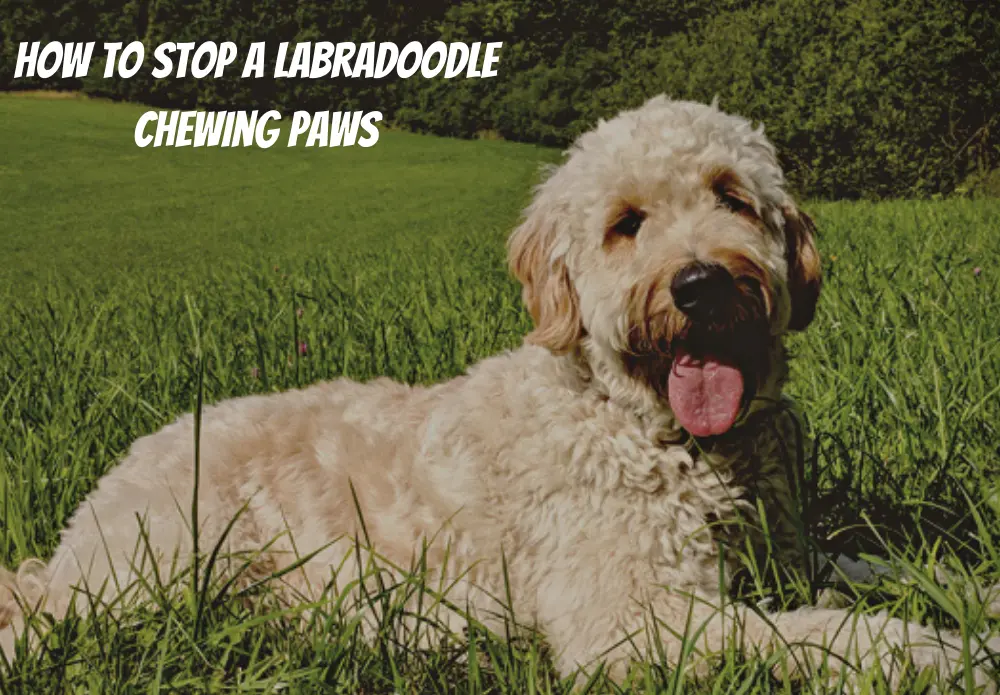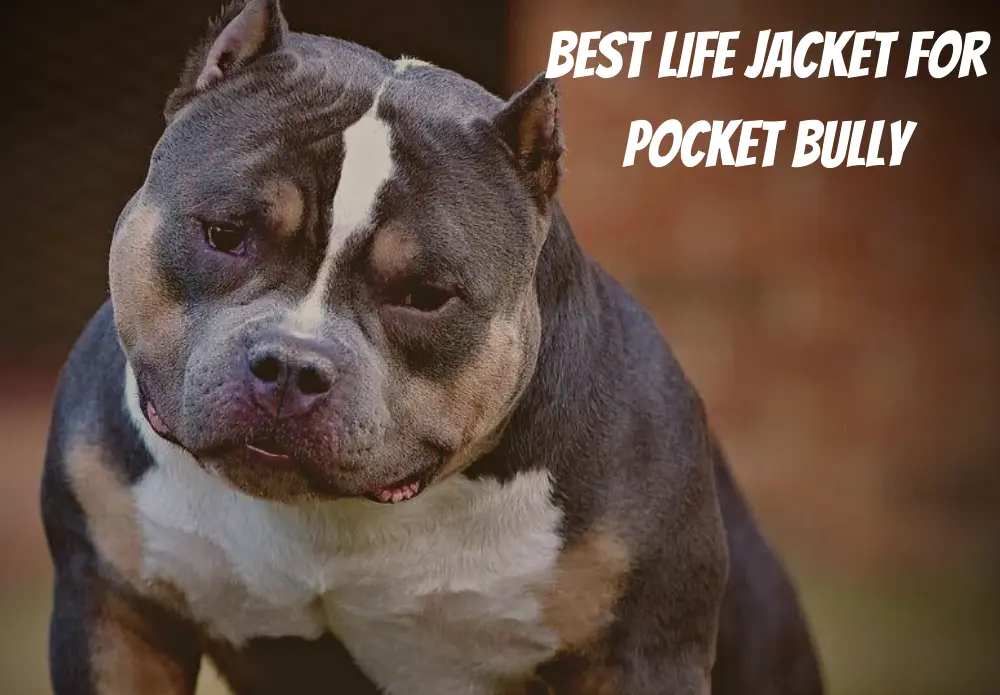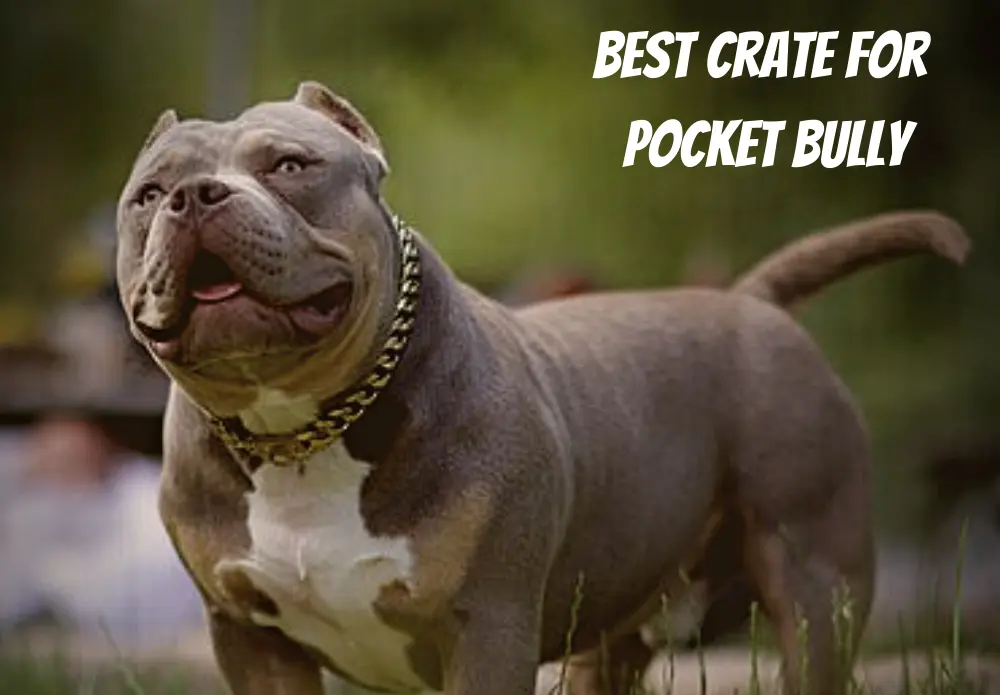It’s normal for a Labradoodle to chew on paws occasionally. All dogs occasionally chew or lick their paws. But what happens when things get out of control? Paw chewing that is excessive or compulsive might be unhealthy. We’ll examine the various causes of paw chewing in Labradoodles today, like trauma, parasites, allergies, dry skin, stress, and boredom. And tell them how to get rid of this torturous habit.
In this post, we’ll explain the difference between healthy and harmful chewing and offer advice on preventing your Labradoodle from excessively chewing their paws.
Why is my Labradoodle Chewing Paws?
The paws of a dog carry sensory data about his surroundings. Their paws are extremely delicate. It explains why some dogs dislike being touched. Particularly delicate are the tops of their paws, and much more so are the gaps between the paw pads.
In some instances, it is natural for dogs to lick and gnaw on their paws. However, if your Labradoodle has been repeatedly licking and gnawing his paws, something more may be happening. Let’s look at the causes of your Labradoodle’s persistent paw-chewing.
Labradoodle Chewing Paws After Injury
Dogs ‘ paws are vulnerable to damage, particularly in an active mixed breed like the Labradoodle. When a dog is in pain, it’s normal for him to chew and lick his paws because his saliva has antibacterial characteristics that can lower the risk of infection.
Care carefully inspect your dog’s paws for broken claws, puncture wounds, insect stings, scrapes, scratches, swelling, or a foreign object like a thorn or splinter. It can also indicate that your Labradoodle is experiencing pain higher up his leg.
Parasites
Your dog may experience itching from fleas, lice, mites, or ticks; one way to scratch is by chewing his paws. Because mites and fleas are so small, an infestation may go undetected.
Over-the-counter treatments are available for minor infestations, but you should take your pet to the veterinarian if his paws are bleeding or he is losing fur.
Labradoodle Chewing Paws Due To Allergies
The most frequent cause of paw chewing in Labradoodles is allergies. The most common reason is food allergies, although there are others.
Dander or dust, environmental elements like pollen and mold, or domestic goods like detergents and fabrics could all be to blame.
Finding and removing the true cause might be challenging because there are so many potential causes. Contact your vet once more. They ought to be able to recommend treatments that can lessen your dog’s symptoms, such as Apoquel or other such medicines.
Dry Skin Can Make Dogs Chew Paws
You already know how itchy dry skin can be if you’ve ever had it. The same applies to dogs. Allergies, parasites, a dry climate, frequent washing, or a more significant underlying health issue can all contribute to dry skin.
Poodles frequently have hypothyroidism when the body doesn’t produce enough thyroid hormone. Dogs are more likely to lick and chew on exposed skin, which can cause hair loss.
Labradoodle Chewing Paws When Anxious or Stressed
In dogs, compulsive paw chewing and licking have also been linked to emotional anguish. This is a technique for self-soothing when they feel anxious or stressed out since licking may lower their stress hormone levels.
Investigate the source of your Labradoodle’s pain. It could result from fear of a new resident, a pet, or any normal changes. Older dogs may become worried more than younger canines if they lose their memory and reasoning skills.
Dog Chewing Paws Through Boredom
Long periods of alone time with dogs can cause boredom and separation anxiety, which is paw-chewing.
Labradoodles need a lot of care and exercise because they are intelligent, active dogs. Ensure your pet participates in enough daily exercise, including playing with family. Leave out toys and give the dog room to wander if you must be out during the day.
When Should I Be Concerned About My Labradoodle Chewing Paws?
Not all chewing paws should be taken seriously. When their faces or paws are unclean, dogs lick or chew them to clean them. It is normal behavior. Therefore, there is no reason to be alarmed. However, it would help if you looked further when excessive licking and chewing occurs.
An underlying problem is nearly often indicated by compulsive paw chewing. Bald spots, stench, bleeding, redness, swelling, sensitivity to touch, and limping are all signs of an issue. If you spot any danger signals, take your Labradoodle to the doctor.
How do I Stop my Labradoodle Chewing Paws?
Establishing the cause of your Labradoodle’s paw chewing is necessary before you can take any action to stop it.
Make sure you spend enough time with your dog and that he gets adequate exercise if you think his behavior is brought on by boredom. The Labradoodle, a hybrid of two working breeds, enjoys having a task at hand. You can want to increase his daily routine by adding new games and toys, switching up his daily walking path, or taking him to a different dog park.
If a parasite is the cause of your dog’s chewing, you must eradicate the infestation. It may take some time to pinpoint the source of an allergic reaction. There are dog foods made specifically for allergic dogs. What your dog is most likely allergic to can be determined by your veterinarian. You should speak with your veterinarian if a major health condition or injury is due to chewing.
Give your dog a chew toy.
This is an excellent approach to stop your dog from chewing on things. Instead of trying to catch your dog in the act of chewing, distract it with a pleasant new toy. This is a simple technique to stop your dog from chewing while keeping it active and entertained—win-win! To pick the ideal chew toy for your dog, use the following advice:
Toss your dog a chew treat.
Chewing may indicate boredom or hunger. By providing your pet with a chewable bone or dental treat, you may counteract both of these problems. These two treats will keep your dog entertained and help tide it over until the next meal. The following advice will help you choose the ideal chewy treat for your dog:
Give your dog a chew that can’t fit all in its mouth to reduce choking risks.
Pick a chew that can withstand forceful nibbling yet is not too mushy.
Do not give your dog chews with flavorings or coatings that could cause stomach distress.
Not all bones are digestible, so always read the label to find reliable ingredients.
Great chew snacks with little risk include bully sticks, yak cheese chews, tendon chews, and trachea.
Keep your dog busy with a deconstruction box.
If your dog is idle, gnawing can be the only thing it can think to do. Any afternoon can be more fascinating by throwing a box full of interesting, breakable objects! To uncover the concealed treats, your dog must utilize its inquisitive mind and chewing teeth. You can make this simple interactive toy yourself using a cardboard box, scrap paper, and goodies.
The paper should be torn into strips and balls from two different stacks.
Some of your dog’s favorite treats should be placed in the box.
Bury the treats as you stuff the box with paper strips, balls, and toys.
While playing, please closely check your dog to ensure it doesn’t ingest any paper or cardboard.
Feed your dog using a puzzle feeder.
For a canine with intelligence, stimulation can be a fantastic diversion. Puzzle feeders are a fantastic way to keep your dog happy and delighted. These engaging food bowls provide your dog with food and a puzzle to keep it occupied, preventing boredom-related paw chewing.
You can create your puzzle feeders or purchase them online or at your neighborhood pet store.
A clever and affordable approach to creating your interactive feeder is to fill a conduit or PVC pipe with treats or kibble.
Play with your dog.
Your dog can be chewed for its amusement. If your pet is bored, it will try anything to pass the time, including gnawing on its paws! Spend time playing with your best friend each day by taking time out of your routine. That can entail playing fetch after lunch, playing tug of war before night, or having a fun sprint around the house when you have a break from work.
The importance of this increases if you have a puppy. It just wants to have fun; it’s not trying to damage itself!
Soothe your dog if it’s anxious or stressed.
A chewing habit might be broken by reducing stimuli. Check to see whether your dog is excessively snarling, whimpering, tucking its tail between its legs, or pacing in addition to chewing its paws. When your dog exhibits this behavior, please pay attention to the environment and try to find the cause of its uneasiness. Your dog will become more relaxed and cease biting its paws.
For instance, loud noises, unfamiliar people, or a change in environment may stress out some dogs.
As many triggers as possible from your pet friend’s routine might help it be happy and healthier. Chewing may be a tense or worried tick.
Additionally, you can try relaxing foods to ease anxiousness.
Discuss your dog’s behavior with your veterinarian. You can use them to identify and treat stress and anxiety.
Rinse your dog’s paws if something is irritating them.
To keep your dog’s paws happy and healthy, wash away allergies. Your dog may be allergic to something outside if you notice it is biting at its paws the moment it enters the house after a pleasant run or rolling around in the grass. To aid with the itching and prevent your dog from chewing, thoroughly rinse those paws with cool, clean water.
Indoor spaces follow the same rules. Let’s say your dog begins to chew on its paws after lying on a carpet, blanket, or piece of furniture. It might then have an allergy to a detergent or cleanser.
If you suspect your dog may have an allergy, talk to your veterinarian. They can guide you on handling your dog’s specific allergy.
Apply a paw balm if your dog’s paws are irritated.
You can get your dog to stop chewing on its paws by relieving itching and irritation. Your dog is likely chewing to treat any infections, swollen paw pads, cuts, or scrapes that it may have. Applying a soothing or healing balm to your pet’s paws can be helpful, but be sure it doesn’t include any dangerous substances in case they start gnawing again.
Pick balms with natural ingredients like cocoa butter, sunflower, and coconut oil.
Consult your veterinarian for the finest topical remedies if your dog develops an infection.
Invest in a pair of dog booties.
If you put it in these chic shoes, your dog won’t chew on its paws. Dog booties are frequently worn in the winter or summer to shield a dog’s paws from inclement weather, but who says they can’t be worn all year round? The booties serve as a barrier between your dog’s teeth and paws, preventing skin tearing and subsequent illnesses.
No problem if you can’t immediately purchase a pair of booties! Socks are a fantastic substitute. Put some socks on your dog’s front legs, and if they slip off, bandage the tops of the socks.
Try putting an E-collar on your dog.
Keep your dog’s paws away from it if it has an infection. An E-collar is a collar that fits snugly around your dog’s neck and has a big dish on it. Veterinarians normally use this collar to prevent dogs from licking their surgical incisions while they are healing, but it can also prevent your dog from chewing on its paws. Leave the collar on for however long your veterinarian advises or until the infection completely recovers.
The most well-known nickname for the E-collar is “the cone of shame.”
Always choose an E-collar that is longer than your dog’s snout when making your selection. This indicates that the cone’s tip should extend past the nose.
Additionally available are soft E-collars. They are a smaller, more comfortable short inflatable ring that you can put around your dog’s neck.
Conclusion
Although almost all dogs occasionally chew on their paws, if this behavior persists, you must determine the cause. Your Labradoodle may occasionally make it clear that she is in agony due to a physical injury. However, not all of the reasons for eating paws are as obvious.
He could be allergic, parasite-infested, stressed, anxious, or bored. It’s your responsibility as his owner to investigate and determine the cause.






